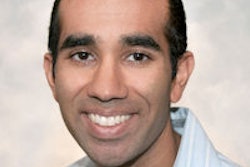Patients want CT and MR imaging results sooner than they're currently getting them, but they don't care whether results are communicated by radiologists or referring physicians, according to a new study published in the March issue of the American Journal of Roentgenology.
And in an era when radiologists are fighting to demonstrate their importance in the healthcare enterprise, this finding could offer an opportunity for them to play a more visible clinical role -- a key component to developing patient-centered radiology.
Researchers at Stanford University in California assessed patients' preferences for how, from whom, and how soon they receive CT and MR imaging results. Ninety-five percent of the patients included in the study wanted the findings within a few hours -- much faster than the length of time many patients currently wait for results from their referring physicians. In 2009, the average report turnaround time in most academic radiology departments exceeded 33 hours for CT and MRI results (AJR, March 2011, Vol. 196:3, pp. 605-610).
Having radiologists deliver imaging results to patients could decrease patient stress, as well as reduce communication failures and delays because radiologists can deliver results quickly and provide the most accurate information, according to lead author Pat Basu, MD, and colleagues.
In addition, "directly communicating imaging results to patients would enable them to participate in the decision-making process as equal partners in their healthcare, which has been shown to have a positive impact on 'health measures and outcomes,' " the authors wrote.
Basu and colleagues randomly distributed hard copies of a survey to 557 patients undergoing CT (62%) and MRI (38%) during a nine-week period between August and October 2008. Forty-four percent of the CT studies were chest, 28% were body (abdomen or pelvis, intravenous pyelogram, and pancreas), 20% were neurologic, 7% were cardiovascular, and 2% were musculoskeletal. As for MRI, 70% were neurologic, 26% were musculoskeletal, and 4% were body (abdomen or pelvis).
A total of 129, or 23%, of these patients completed the survey. Thirty-one percent preferred to receive normal results by the fastest method; methods included telephone, fax, letter, e-mail, and in person. For abnormal results, 35% preferred to receive them by telephone, Basu's team found.
In terms of who communicates the results, patients did not show any overwhelming preference, although slightly higher percentages did choose referring physicians or "whoever is faster," according to the authors.
For normal results:
- 41% chose the referring physician.
- 33% selected "whoever is faster."
- 14% chose both.
- 12% chose the radiologist.
For abnormal results:
- 41% wanted to talk to their referring physician.
- 27% chose both.
- 26% chose "whoever is faster."
- 6% chose the radiologist.
More than 25% of patients were indifferent as to who gave the results, caring only about the speed of delivery.
A new model?
Radiologists practicing interventional radiology, pediatric radiology, ultrasound, and mammography typically communicate results to patients, the authors wrote. But diagnostic radiologists in CT and MRI rarely talk to, or even see, their patients.
"Our study uncovers an important opportunity for radiologists in CT and MRI to play a more visible clinical role, increase patient satisfaction, and improve the quality of healthcare by communicating results sooner," they wrote.
In fact, a visible radiologist is key to developing patient-centered radiology. Direct communication between radiologist and patient requires a new model of delivery of care, a model that has been criticized as having potential to increase costs and workloads while reducing profits. But the short-term costs of direct communication are less than the long-term effects of remaining invisible in the continuum of patient care, according to Basu and colleagues.
"Commoditization of radiology services is enabled by the invisibility of radiologists to patients," they wrote. "Radiologists can prevent the commoditization of imaging procedures by continually improving on the quality of their imaging services. One important way to accomplish this is through direct communication of results."





















